
Rama Valley: A Serene Alpine Haven in Pakistan
Discover the tranquil beauty of Rama Valley in Pakistan, a serene alpine haven with lush meadows, crystal-clear lakes, and majestic snow-capped peaks.
Nestled in the foothills of the mighty Nanga Parbat, Rama Valley is a tranquil escape for nature lovers and adventure seekers alike. The valley is located in the Astore District of Gilgit-Baltistan, offering a serene alpine landscape that is a stark contrast to the bustling city life. With its lush green meadows, dense pine forests, and towering snow-capped peaks, Rama Valley provides a perfect backdrop for relaxation and exploration. The highlight of the valley is the stunning Rama Lake, which sits at an elevation of about 3,500 meters. The lake's crystal-clear waters reflect the surrounding mountains, creating a picturesque scene that is a photographer's dream. Visitors can enjoy hiking around the lake or simply bask in the natural beauty. The valley is also home to a variety of wildlife, including the elusive snow leopard, making it a paradise for wildlife enthusiasts. Beyond its natural beauty, Rama Valley offers a glimpse into the local culture and traditions of the people of Gilgit-Baltistan. The warm and hospitable locals are always eager to share their stories and traditions with visitors. Whether you're trekking through the lush meadows, camping under the star-studded sky, or savoring local delicacies, Rama Valley promises an unforgettable experience.
Local tips in Rama Valley
- Best time to visit is from May to September when the weather is pleasant and the meadows are in full bloom.
- Carry warm clothing even in summer as temperatures can drop significantly at night.
- Local guides are available and highly recommended for treks and hikes to ensure safety and to learn more about the area.
- Try local dishes like Chapshoro and Tumoro to get a taste of the regional cuisine.
- Respect local customs and traditions, and always seek permission before photographing locals.
- Ensure you have all necessary permits and check local travel advisories before planning your trip.
Rama Valley: A Serene Alpine Haven in Pakistan
Nestled in the foothills of the mighty Nanga Parbat, Rama Valley is a tranquil escape for nature lovers and adventure seekers alike. The valley is located in the Astore District of Gilgit-Baltistan, offering a serene alpine landscape that is a stark contrast to the bustling city life. With its lush green meadows, dense pine forests, and towering snow-capped peaks, Rama Valley provides a perfect backdrop for relaxation and exploration. The highlight of the valley is the stunning Rama Lake, which sits at an elevation of about 3,500 meters. The lake's crystal-clear waters reflect the surrounding mountains, creating a picturesque scene that is a photographer's dream. Visitors can enjoy hiking around the lake or simply bask in the natural beauty. The valley is also home to a variety of wildlife, including the elusive snow leopard, making it a paradise for wildlife enthusiasts. Beyond its natural beauty, Rama Valley offers a glimpse into the local culture and traditions of the people of Gilgit-Baltistan. The warm and hospitable locals are always eager to share their stories and traditions with visitors. Whether you're trekking through the lush meadows, camping under the star-studded sky, or savoring local delicacies, Rama Valley promises an unforgettable experience.
When is the best time to go to Rama Valley?
Iconic landmarks you can’t miss
Pakistan Monument
Discover the beauty and history of Pakistan at the iconic Pakistan Monument in Islamabad, a symbol of national pride and unity.

Lok Virsa Heritage Museum
Explore Pakistan's cultural tapestry at Lok Virsa Heritage Museum, featuring stunning artifacts and live performances celebrating the nation's heritage.
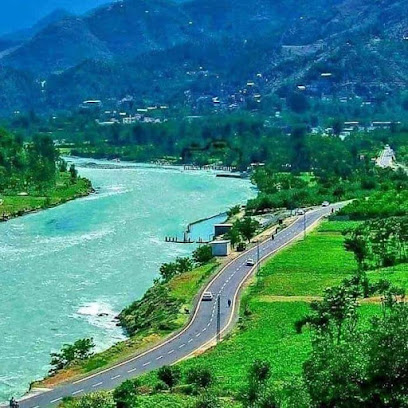
Pakistan Monument Museum
Explore the essence of Pakistan's history and culture at the Pakistan Monument Museum, a captivating attraction in Islamabad.
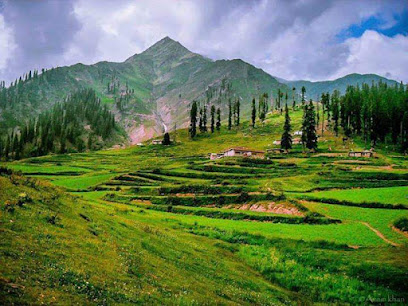
Baltit Fort Hunza
Discover the historical marvel of Baltit Fort in Hunza Valley, where ancient architecture meets breathtaking mountain landscapes.

Rakaposhi View Point Hotel & Restaurant
Experience the serene beauty and delicious cuisine at Rakaposhi View Point Hotel & Restaurant, where stunning mountain views await every visitor.

Pakistan Museum of Natural History
Discover the rich biodiversity and geological wonders of Pakistan at the Pakistan Museum of Natural History, an educational gem in the heart of Islamabad.

Altit Fort
Explore the rich history and breathtaking views at Altit Fort, a gem of Hunza Valley showcasing ancient architecture and cultural heritage.
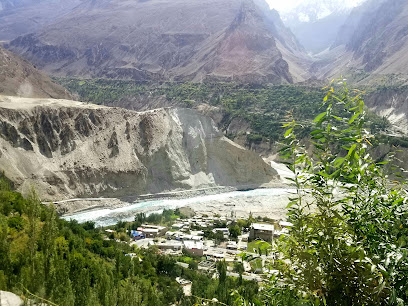
Fun City | Pakistan's #1 Award Winning Family Entertainment Centre | The Centaurus Mall
Discover endless fun at Fun City, Islamabad's top choice for family entertainment with thrilling rides, interactive games, and a vibrant atmosphere.

Shakarparian View Point
Experience the breathtaking vistas of Islamabad at Shakarparian View Point, a serene escape into nature's beauty and cultural richness.

Margala Hills
Discover the breathtaking beauty of Margala Hills, a natural paradise in Islamabad, perfect for hiking, wildlife viewing, and serene escapes.

Jasmine Garden
Discover the breathtaking beauty of Jasmine Garden, a floral haven in Islamabad perfect for relaxation, picnics, and nature appreciation.

Lok Virsa - National Institute of Folk and Traditional Heritage
Experience the vibrant culture and rich traditions of Pakistan at Lok Virsa - National Institute of Folk and Traditional Heritage in Islamabad.
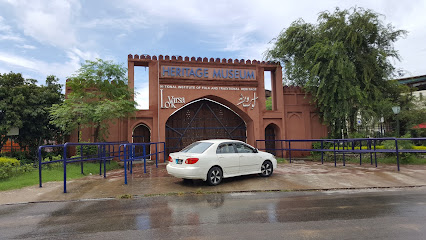
Rama Meadows
Discover Rama Meadows, a stunning hiking area in Astore, Pakistan, where lush landscapes and breathtaking vistas await every adventurer.

Astore Valley
Explore Astore Valley, a hidden gem in northern Pakistan, where breathtaking landscapes, serene nature, and rich culture await your discovery.
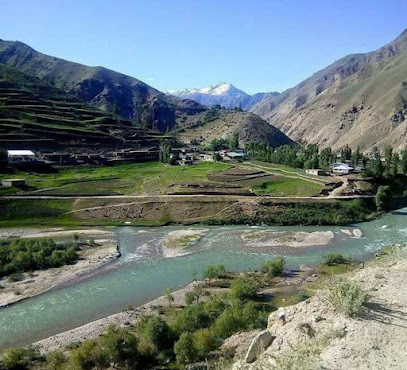
Rama Lake
Discover the serene beauty of Rama Lake in Pakistan, a tranquil destination surrounded by majestic mountains and lush landscapes.

Unmissable attractions to see
Shakarparian National Park
Explore the stunning landscapes and vibrant biodiversity of Shakarparian National Park, a serene gem in the heart of Islamabad, Pakistan.

Daman-e-Koh
Discover breathtaking views and hiking adventures at Daman-e-Koh, the scenic overlook of Islamabad, surrounded by nature's tranquility.

Pakistan Monument
Explore the Pakistan Monument, a stunning tribute to the nation's heritage, offering breathtaking views and a glimpse into the rich history of Pakistan.
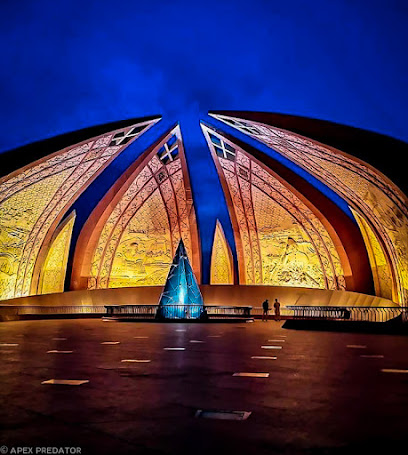
Lok Virsa Heritage Museum
Explore Pakistan's vibrant culture and history at Lok Virsa Heritage Museum, a treasure trove of art and tradition in Islamabad.
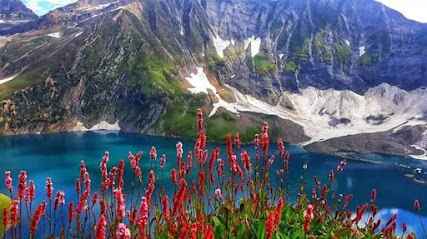
Pakistan Monument Museum
Explore the Pakistan Monument Museum: A Journey Through the Rich History and Culture of Pakistan in the Heart of Islamabad.

Baltit Fort Hunza
Discover the breathtaking views and rich history at Baltit Fort, a must-visit tourist attraction in the stunning Hunza Valley.

Rakaposhi View Point Hotel & Restaurant
Discover the breathtaking beauty and delicious cuisine at Rakaposhi View Point Hotel & Restaurant in Ghulmet, a true gem in the heart of the Karakoram.

Pakistan Museum of Natural History
Explore the diverse ecosystems and geological history of Pakistan at the Pakistan Museum of Natural History in Islamabad.

Altit Fort
Experience the rich heritage and stunning views at Altit Fort, a historical landmark in the breathtaking Hunza Valley of Pakistan.
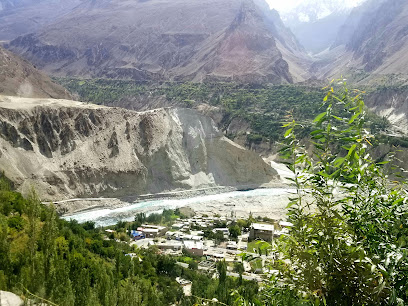
Daman-e-Koh View Point
Experience the stunning panoramic views of Islamabad from Daman-e-Koh, a beautiful viewpoint nestled in the Margalla Hills.

Bird Park
Explore the enchanting Bird Park in Islamabad, a serene oasis filled with vibrant birds and stunning natural beauty.

Margalla Hills Islamabad View Point
Experience breathtaking views and serene nature at Margalla Hills Islamabad View Point, an ideal retreat for tourists seeking tranquility and beauty.

Dino Park
Discover Dino Park in Islamabad, a unique blend of nature and entertainment featuring life-sized dinosaur replicas and engaging activities for the whole family.

Shakarparian View Point
Discover the breathtaking views and rich cultural heritage at Shakarparian View Point in Islamabad, a must-visit for every traveler.

Margalla Hills National Park
Discover the breathtaking beauty of Margalla Hills National Park, a natural retreat with stunning landscapes and diverse wildlife near Islamabad.

Essential places to dine
TKR 3
Experience the vibrant flavors of Pakistan at TKR 3 in Islamabad – where culinary tradition meets modern dining.

Khyber Shinwari
Experience the rich flavors of Pakistan at Khyber Shinwari, famous for its mutton chops and vibrant atmosphere in Islamabad.
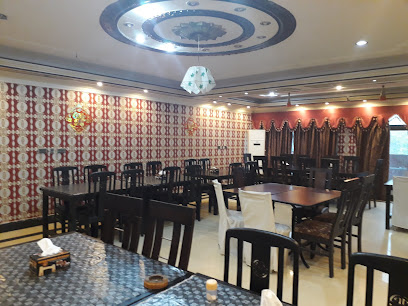
Ginyaki
Discover authentic Chinese flavors at Ginyaki in Islamabad – a perfect dining spot for every food lover.

Purana Shinwari Restaurant
Discover authentic Afghani flavors at Purana Shinwari Restaurant in Islamabad – where every dish tells a story.

Zia Balti & BBQ
Experience authentic Pakistani barbecue at Zia Balti & BBQ in Islamabad's Saidpur Market – where flavor meets tradition.

Delight Afghani Burger and fries
Experience unique Afghani flavors at Delight Afghani Burger and Fries - where traditional meets fast food in Islamabad.
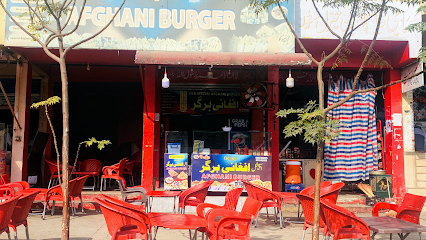
La Terrazza
Discover exquisite dining at La Terrazza in Islamabad's Centaurus Mall—where flavor meets elegance in every dish.

Xtapa Steak & Salsa
Discover family-friendly dining at Xtapa Steak & Salsa, where delicious steaks meet breathtaking views in Islamabad's vibrant rooftop setting.

Chalet
Discover the culinary delights at Chalet, where traditional flavors meet modern ambiance in the heart of Islamabad.

Lahore Restaurant
Savor authentic Pakistani flavors at Lahore Restaurant in Islamabad – your gateway to traditional cuisine and delightful breakfasts.

Tayto Cafe - Centaurus Mall
Experience the perfect blend of fine dining and fast food at Tayto Cafe in Centaurus Mall, Islamabad – where every bite is a delight.

Kabul Mazar Restaurant
Experience the rich flavors of authentic Afghan cuisine at Kabul Mazar Restaurant in Islamabad.

Khyber Shinwari Dasterkhwan
Discover authentic Pakistani cuisine at Khyber Shinwari Dasterkhwan in Islamabad—where every dish tells a story.

Lala Jee Fry Chanay
Discover authentic Pakistani flavors at Lala Jee Fry Chanay—where every bite tells a story of tradition and taste.

Landi Kotal Shinwari Restaurant
Experience authentic Pakistani cuisine at Landi Kotal Shinwari Restaurant in Islamabad—where every meal tells a story.

Markets, malls and hidden boutiques
Giga Mall
Discover the ultimate shopping and entertainment experience at Giga Mall, Islamabad's premier destination for fashion, food, and fun.
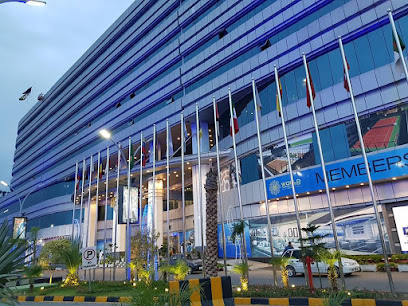
Interwood Furniture Islamabad
Explore exquisite furniture and decor at Interwood Furniture in Islamabad, where style meets quality for your home and office needs.

Malik Cash& Carry
Explore the rich tapestry of Asian flavors at Malik Cash & Carry, Islamabad's premier destination for authentic grocery products.

One Dollar Store Factory Outlet
Discover unbeatable value at the One Dollar Store Factory Outlet in Islamabad, offering a wide variety of products at incredible prices for savvy shoppers.

Haroon’s
Explore Haroon's in Islamabad for an exceptional selection of local gifts, handicrafts, and souvenirs that capture the essence of Pakistani culture.

Fantasies Gifts & Toys
Explore Fantasies Gifts & Toys in Islamabad for unique gifts, exquisite jewelry, and delightful toys that capture the essence of Pakistani craftsmanship.

Kayal, Islamabad
Discover Kayal in Islamabad, a charming gift shop offering unique souvenirs and stylish women's clothing, perfect for every traveler.
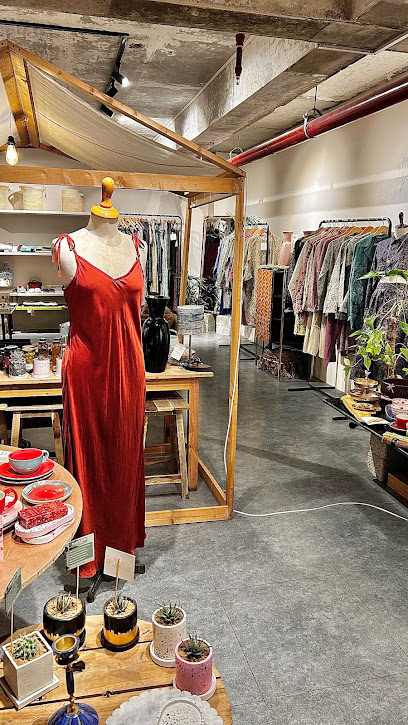
The Gift Shop
Shop for unique gifts and home decor in Islamabad's vibrant G-9 Markaz at The Gift Shop, where local culture meets exquisite craftsmanship.

Railey Market
Discover the charm of Railey Market, a vibrant shopping destination in Astore Valley, where local culture and authentic flavors come to life.

Al-SAFA HIJAB & BOUTIQUE
Discover a blend of tradition and modernity at Al-Safa Hijab & Boutique, Islamabad's premier destination for modest fashion.

Rama Valley Hut
Discover the tranquility and breathtaking scenery of Rama Valley Hut, your perfect getaway in the heart of Gilgit-Baltistan.

Curiosity by Concave
Explore Curiosity by Concave in Islamabad for unique gifts and authentic handicrafts that showcase Pakistan's vibrant culture and artistry.
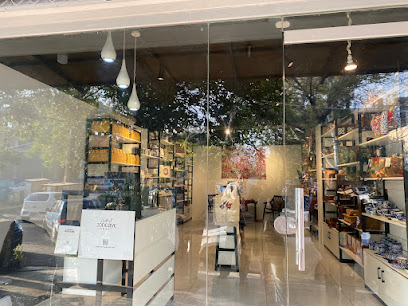
Aghazetaleem Store
Discover the literary charm of Aghazetaleem Store in Islamabad, a haven for book lovers with a rich collection of local and international works.

Tasweer
Discover unique, handcrafted gifts at Tasweer, a cultural gem showcasing local artisans and traditional craftsmanship.

Fashion Pakistan Lounge (FPL) - Multi Designer Store Centaurus Mall Islamabad
Discover exquisite women's clothing and bridal wear at Fashion Pakistan Lounge, a premier multi-designer store in Islamabad's Centaurus Mall.

Essential bars & hidden hideouts
MaiKada Cafe and Restaurant /Best Sheesha cafe in Islamabad Shisha Shesha Lounge hookah lounge In Islamabad F10 Pakistan
Discover Islamabad's MaiKada Cafe - where delicious cuisine meets the finest shisha experience in a vibrant and welcoming atmosphere.

HAPPY HOUR
Discover a culinary gem in Gilgit at HAPPY HOUR, where local flavors meet international cuisine in a vibrant setting.
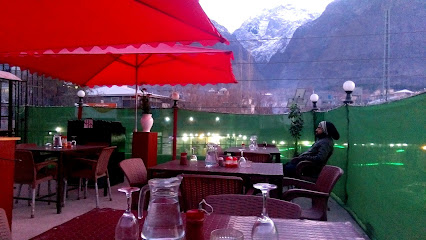
Imli aloo bukhara juice corner
Experience the refreshing taste of Imli Aloo Bukhara and other vibrant juices at this popular corner bar in Islamabad.

I Am Happy.
Experience the vibrant nightlife at 'I Am Happy,' a bar in Islamabad known for its lively atmosphere and delicious drinks.

Lincoln Reading Lounge
Explore Lincoln Reading Lounge: A serene retreat within the National Library of Pakistan, perfect for literature enthusiasts and travelers seeking tranquility.
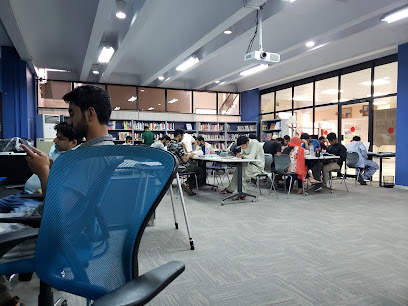
Six Pockets Snooker Club
Discover the excitement of snooker at Six Pockets Snooker Club, Islamabad's top sports bar with vibrant atmosphere and great competitions.

Le Casa Del Habanos
Discover the elegance of Le Casa Del Habanos, where fine cigars and exquisite dining meet live piano music in Islamabad's upscale Beverly Centre.

Vicky Lemon Soda Pakistan
Discover the refreshing allure of Vicky Lemon Soda, a vibrant bar in Rawalpindi serving delightful lemon soda and a variety of refreshing drinks.

AVR Hotel & Restaurant
Discover the flavors of Gilgit-Baltistan at AVR Hotel & Restaurant, where stunning views meet delectable dishes in a serene setting.

Rama Valley Hutt
Discover the beauty of Gilgit-Baltistan at Rama Valley Hutt, a serene hotel retreat surrounded by nature's splendor.

Pulp Fusion
Discover the vibrant nightlife at Pulp Fusion, a trendy bar in Islamabad offering a delightful variety of drinks and a lively atmosphere.

GreenO Juice Bars
Discover refreshing health drinks and a vibrant atmosphere at GreenO Juice Bars in Islamabad, perfect for tourists seeking a healthy break.

Terrace Cafe
Experience the vibrant atmosphere of Islamabad at Terrace Cafe, where refreshing drinks and stunning views await every visitor.

Daro
Discover Daro, a charming bar in Shakar Parian, Islamabad, offering a serene setting for relaxation and socializing amidst lush greenery.

A1 Soda Club
Discover the vibrant atmosphere and refreshing drinks at A1 Soda Club, the ultimate bar experience in Rawalpindi, Punjab.

Local Phrases about Rama Valley
-
- Helloسلام
[salaam] - Goodbyeخدا حافظ
[khuda hafiz] - Yesہاں
[haan] - Noنہیں
[nahin] - Please/You're welcomeبراہ کرم
[baraah karam] - Thank youشکریہ
[shukriya] - Excuse me/Sorryمعاف کیجیے
[maaf kijiye] - How are you?آپ کیسے ہیں؟
[aap kaise hain?] - Fine. And you?ٹھیک ہوں. اور آپ؟
[theek hoon. aur aap?] - Do you speak English?کیا آپ انگریزی بولتے ہیں؟
[kya aap angrezi boltay hain?] - I don't understandمجھے سمجھ نہیں آیا
[mujhe samajh nahi aaya]
- Helloسلام
-
- I'd like to see the menu, pleaseبراہ کرم مینو دیکھنا ہے
[baraah karam menu dekhna hai] - I don't eat meatمیں گوشت نہیں کھاتا
[main gosht nahi khaata] - Cheers!چیرز!
[cheers!] - I would like to pay, pleaseبراہ کرم ادا کرنا ہے
[baraah karam ada karna hai]
- I'd like to see the menu, pleaseبراہ کرم مینو دیکھنا ہے
-
- Help!مدد!
[madad!] - Go away!چلے جاؤ!
[chale jao!] - Call the Police!پولیس کو بلاؤ!
[police ko bulao!] - Call a doctor!ڈاکٹر کو بلاؤ!
[doctor ko bulao!] - I'm lostمیں گم ہوگیا ہوں
[main gum hogaya hoon] - I'm illمجھے بیماری ہے
[mujhe bimari hai]
- Help!مدد!
-
- I'd like to buy...میں خریدنا چاہتا ہوں...
[main kharidna chahta hoon...] - I'm just lookingمیں صرف دیکھنے آیا ہوں
[main sirf dekhne aaya hoon] - How much is it?یہ کتنے کا ہے؟
[yeh kitne ka hai?] - That's too expensiveیہ بہت مہنگا ہے
[yeh bohot mehnga hai] - Can you lower the price?کیا آپ قیمت کم کر سکتے ہیں؟
[kya aap qeemat kam kar sakte hain?]
- I'd like to buy...میں خریدنا چاہتا ہوں...
-
- What time is it?وقت کیا ہوا ہے؟
[waqt kya hua hai?] - It's one o'clockایک بجے ہیں
[aik baje hain] - Half past (10)دس بج کر پندرہ منٹ ہوگئے ہیں
[das baj kar pandrah minute hogaye hain] - Morningصبح
[subah] - Afternoonدوپہر
[dopahar] - Eveningشام
[shaam] - Yesterdayگزشتہ کل
[guzishta kal] - Todayآج
[aaj] - Tomorrowکل
[kal] - 1ایک
[aik] - 2دو
[do] - 3تین
[teen] - 4چار
[chaar] - 5پانچ
[paanch] - 6چھے
[chhe] - 7سات
[saat] - 8آٹھ
[aath] - 9نو
[no] - 10دس
[das]
- What time is it?وقت کیا ہوا ہے؟
-
- Where's a/the...?کہاں ہے...
[kahan hai...] - What's the address?پتہ کیا ہے؟
[pata kya hai?] - Can you show me (on the map)?کیا آپ مجھے دکھا سکتے ہیں؟
[kya aap mujhe dikhha sakte hain?] - When's the next (bus)?اگلی (بس) کب ہے؟
[agli (bus) kab hai?] - A ticket (to ....)ایک ٹکٹ (سے ...)
[aik ticket (se ...)]
- Where's a/the...?کہاں ہے...
History of Rama Valley
-
Rama Valley, nestled in the Gilgit-Baltistan region of Pakistan, has a rich history that dates back thousands of years. Archaeological findings suggest that the area was inhabited during the Bronze Age, and various ancient artifacts have been discovered, indicating a long-standing human presence.
-
Rama Valley played a significant role as a part of the ancient Silk Road network. Traders and travelers passed through the valley, exchanging goods, ideas, and cultures between the East and the West. This connection brought a blend of cultural influences to the valley, enriching its heritage.
-
During the 3rd to 7th centuries, Buddhism flourished in the region, leaving behind a legacy of stupas, monasteries, and rock carvings. The remnants of these Buddhist sites can still be found in and around Rama Valley, serving as a testament to the region's spiritual and cultural diversity.
-
In the 8th century, the spread of Islam reached the Rama Valley, brought by Muslim conquerors and traders. The new religion gradually integrated with the local culture, and Islamic architecture and traditions began to shape the valley's identity. Many mosques and Islamic schools were established during this period.
-
During the 19th century, Rama Valley came under British influence as part of their broader control over the Indian subcontinent. The British introduced new administrative structures and infrastructure projects, including roads and communication lines, which transformed the region's connectivity and accessibility.
-
After Pakistan gained independence in 1947, Rama Valley became part of the newly formed country. The government initiated various development projects to improve the living standards of the local population. These efforts included the construction of schools, healthcare facilities, and roads, which facilitated greater integration with the rest of the country.
-
Rama Valley is home to a diverse array of ethnic groups, including Baltis, Shinas, and Kohistanis. Each group has its unique traditions, languages, and customs, contributing to the valley's rich cultural mosaic. The local festivals, music, dance, and cuisine reflect this vibrant cultural heritage.
Rama Valley Essentials
-
Rama Valley is located in the Astore District of Gilgit-Baltistan, Pakistan. The nearest major airport is Islamabad International Airport. From Islamabad, you can take a domestic flight to Gilgit Airport. From Gilgit, you can hire a taxi or take a local bus to Astore, which is approximately a 4-5 hour drive. Alternatively, you can travel by road from Islamabad to Astore, but be prepared for a long journey of around 12-14 hours via the Karakoram Highway and Babusar Pass.
-
Within Rama Valley, transportation options include local taxis, jeeps, and motorbikes. Given the rugged terrain, hiring a 4x4 vehicle is advisable for exploring the valley and its surrounding areas. Public transport is limited, so renting a vehicle or hiring a local guide with transportation is often the most convenient option for tourists.
-
The official currency in Pakistan is the Pakistani Rupee (PKR). While major hotels and some restaurants may accept credit cards, cash is predominantly used, especially in rural areas like Rama Valley. ATMs are scarce, so it is advisable to withdraw sufficient cash in Gilgit or Islamabad before traveling to the valley.
-
Rama Valley is generally a safe destination for tourists, but it is always best to take standard precautions. Avoid traveling alone at night, and keep your belongings secure. While there are no specific high-crime areas targeting tourists, it is essential to stay vigilant and aware of your surroundings. Engaging a local guide can enhance your safety and experience.
-
In case of emergency, dial 15 for police assistance or 1122 for medical emergencies. The nearest medical facilities are in Astore, but for serious medical issues, you may need to travel to Gilgit. It is crucial to have travel insurance that covers medical emergencies. Pharmacies in Astore can provide basic medications, but it is wise to carry a personal medical kit.
-
Fashion: Do dress modestly; women should wear long skirts or trousers and men should avoid shorts. Religion: Do respect local customs and traditions; remove your shoes before entering mosques. Public Transport: Do be polite and offer your seat to elderly passengers; don't eat or drink on public transport. Greetings: Do greet people with 'Assalamu Alaikum'; don't initiate physical contact with the opposite gender. Eating & Drinking: Do try local dishes and accept food offerings graciously; don't waste food, as it is considered disrespectful.
-
To experience Rama Valley like a local, visit during the summer months when the weather is pleasant, and the valley is lush and green. Engage with local guides who can provide insights into the valley's natural beauty and cultural heritage. Don't miss visiting Rama Lake and the surrounding meadows for breathtaking views. Participate in local festivals and try traditional dishes like 'Chapshoro' and 'Mamtu' for an authentic experience.
Trending Landmarks in Rama Valley
-
Pakistan Monument
-
Lok Virsa Heritage Museum
-
Pakistan Monument Museum
-
Baltit Fort Hunza
-
Rakaposhi View Point Hotel & Restaurant
-
Pakistan Museum of Natural History
-
Altit Fort
-
Fun City | Pakistan's #1 Award Winning Family Entertainment Centre | The Centaurus Mall
-
Shakarparian View Point
-
Margala Hills
-
Jasmine Garden
-
Lok Virsa - National Institute of Folk and Traditional Heritage
-
Rama Meadows
-
Astore Valley
-
Rama Lake
Nearby Cities to Rama Valley
-
Things To Do in Gilgit
-
Things To Do in Naran
-
Things To Do in Kaghan
-
Things To Do in Abbottabad
-
Things To Do in Murree
-
Things To Do in Swat
-
Things To Do in Islamabad
-
Things To Do in Rawalpindi
-
Things To Do in Chitral
-
Things To Do in Leh
-
Things To Do in Jammu
-
Things To Do in Sialkot
-
Things To Do in Peshawar
-
Things To Do in Gujranwala
-
Things To Do in Manali








